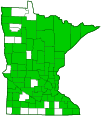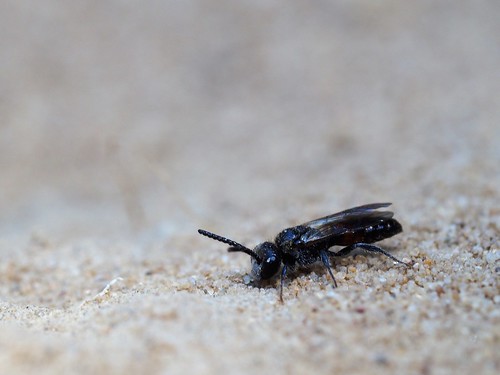sweat and furrow bees
(Lasioglossum spp.)
Overview • Description • Distribution • Taxonomy
Description |
Lasioglossum are tiny to medium-sized bees, ranging from 1⁄16″ to ⅜″ (2 to 10 mm) in length. They may be black, green, or blue, and shiny metallic or dull. Some have red abdomens. Hair bands on the abdomen are on the front part of each segment. This feature differentiates them from the similar Halictus, which have hair bands on the rear part. However, most Lasioglossum have scant hairs on the abdomen, and some have an almost hairless abdomen. The antennae are inserted relatively high on the face, at least one time, often two or three times, the diameter of the antennal socket above the plate on the face (clypeus). On the forewing the basal vein is distinctly curved inward. There are usually three submarginal cells, sometimes only two. The first vein separating the submarginal cells is well defined, but the others are less distinct. This feature also differentiates them from Halictus, on which all veins separating the submarginal cells are well defined. Lasioglossum bees can usually be identified to the genus, but identifying the species is often difficult. Many species can be identified only by the density and location of tiny pits (punctures) on the thorax, and the texture of the surface between the punctures. For this reason, identifications are often limited to “Lasioglossum sp.” |
Distribution |
||
|
Sources |
|
| 10/17/2024 | ||
Taxonomy |
|
Order |
Hymenoptera (Ants, Bees, Wasps, and Sawflies) |
Suborder |
Apocrita (Narrow-waisted Wasps, Ants, and Bees) |
Infraorder |
Aculeata (Ants, Bees, and Stinging Wasps) |
Superfamily |
Apoidea (Bees and Apoid Wasps) |
Epifamily |
|
Family |
Halictidae (sweat bees) |
Subfamily |
|
Tribe |
Halictini |
Subordinate Taxa |
|
Subgenus Acanthalictus Subgenus Australictus Subgenus Austrevylaeus Subgenus Callalictus Subgenus Chilalictus Subgenus Ctenonomia Subgenus Dialictus (metallic sweat bees) Subgenus Echthralictus Subgenus Evylaeus Subgenus Glossalictus Subgenus Hemihalictus Subgenus Homalictus Subgenus Lasioglossum Subgenus Leuchalictus Subgenus Oxyhalictus Subgenus Paradialictus Subgenus Parasphecodes Subgenus Pseudochilalictus Subgenus Rubrihalictus Subgenus Sellalictus Subgenus Sphecodogastra Subgenus Sudila Subgenus Urohalictus |
|
Synonyms |
|
|
|
Common Names |
|
This genus has no common name. The common name of the Subamily Halictinae is sweat and furrow bees, and it is used here for convenience. |
|
Glossary
Clypeus
On insects, a hardened plate on the face above the upper lip (labrum).
Visitor Photos |
||
Share your photo of this insect. |
||
This button not working for you? |
||
Alfredo Colon |
||
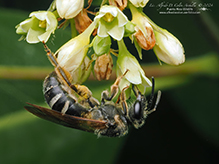 |
||
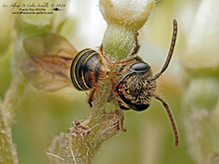 |
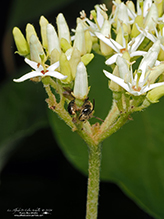 |
|
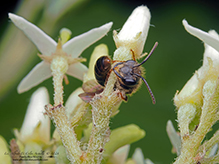 |
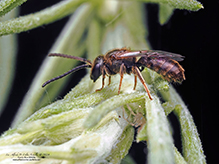 |
|
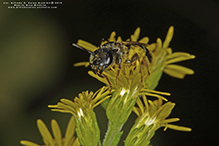 |
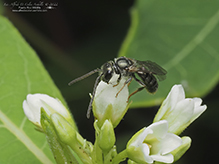 |
|
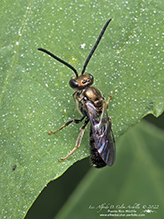 |
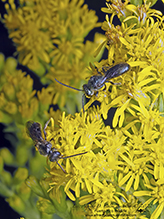 |
|
MinnesotaSeasons.com Photos |
||
|
||
|
||

Visitor Videos |
||
Share your video of this insect. |
||
This button not working for you? |
||
|
Other Videos |
||
Small Sweat Bee (Lasioglossum) Nesting Colony - at home! |
About
Apr 28, 2020 The planting of native plants is paying dividends this year. It's phenomenal and we are sort of freaking out everyday with the new life we observe. The Small Sweat Bee nesting colony is our newest discovery. The book I reference is Heather Holm's: Bees, An Identification and Native Plant Forage Guide. https://www.pollinatorsnativeplants.c... |
ISC: Lasioglossum sp. doing some pollinating |
About
Apr 23, 2018 This Invertebrate Short Clip was shot in Larimer County, Colorado on 4/22/2018 This little Lasioglossum sp. was flying around some dandelions and doing some pollinating. Instagram: @dailyentomologist |

Visitor Sightings |
||
Report a sighting of this insect. |
||
This button not working for you? |
||
Alfredo Colon |
Location: Albany, NY |
 |
Alfredo Colon |
Location: Albany, NY |
 |
| Alfredo Colon 8/16/2022 |
Location: Albany, NY |
| Alfredo Colon 8/15/2022 |
Location: Albany, NY |
| Alfredo Colon 8/8/2022 |
Location: Albany, NY |
| Alfredo Colon 8/19/2019 |
Location: Woodbury, MN |
MinnesotaSeasons.com Sightings |
||
|

Created: 3/12/2023 Last Updated: © MinnesotaSeasons.com. All rights reserved. |
